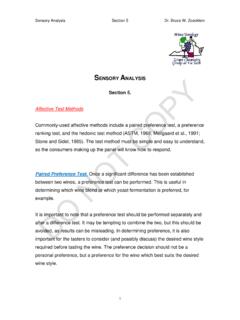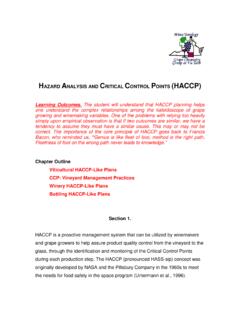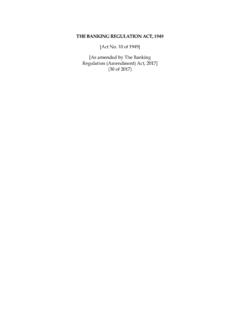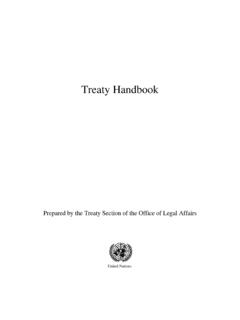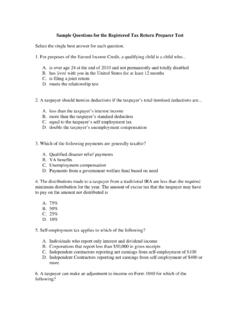Transcription of SENSORY ANALYSIS Section 4. Methods of Sensory Evaluation
1 SENSORY ANALYSIS Section 4 Dr. Bruce W. Zoecklein 1 SENSORY ANALYSIS Section 4. Methods of SENSORY Evaluation SENSORY Evaluation Methods may be divided into two broad classes: affective and analytical Methods (Institute of Food Technologists, 1981). Affective Methods use consumer panels or trained panelists to answer questions such as the following: Which product do you prefer? Which product do you like? How well do you like this product? How often would you buy/use this product? Affective Methods require a much larger panel size than do analytical Methods in order to have greater confidence about the interpretation of the results.
2 The most common analytical Methods of SENSORY Evaluation used in the wine industry are discrimination (or difference) and descriptive Methods . Discrimination tests can be used to determine if products are different, if a given wine characteristic is different among samples, or if one product has more of a selected characteristic than another. Experienced panelists can complete discrimination tests. SENSORY ANALYSIS Section 4 Dr. Bruce W. Zoecklein 2 Descriptive Methods are used to provide more-comprehensive profiles of a product by asking panelists to identify the different characteristics within the product and quantify characteristics.
3 Trained panelists must be used for descriptive Methods (see Trained Panelists and Panelist Training). Discrimination (Difference) Tests Difference testing is used to determine if different winemaking processing techniques or operations have a SENSORY impact. As such, difference testing Methods generally provide the winemaker with the practical information needed. They are the most feasible for use in a winery environment, and are simple and robust. There are many other SENSORY Methods available, including consumer preference and acceptance tests, and descriptive ANALYSIS .
4 However, performing some of these more-elaborate tests may not be feasible in small- to medium-sized wineries. They are available through SENSORY service companies. Difference testing is a way to determine if a SENSORY difference actually exists between samples. The degree or nature of the difference cannot be quantified, however. Descriptive tests are generally needed to truly define differences. There are four types of difference tests which can be used to answer some practical questions. The most common for use in the wine industry are the triangle difference test and the duo-trio difference test: triangle: Is a particular lot made with rot-compromised fruit different from other lots?
5 Duo-trio: Is there a SENSORY difference among wines fermented with different yeasts? SENSORY ANALYSIS Section 4 Dr. Bruce W. Zoecklein 3 paired comparison: Does the high VA in this wine impact it sensorially? A brief description of the methodology of these procedures, including how to perform the tests, the number of tasters required, and the required result for concluding that a significant difference truly exists, is outlined in Table 1. Once a difference has been established, another more elaborate test, such as a preference test, can also be performed.
6 Difference tests are sometimes applied in a crude fashion at the winery where only one or two tasters perform the Evaluation . While better than no testing at all, to achieve a statistically-significant SENSORY result, a slightly more advanced procedure should be carried out using the minimum number of tasters, as suggested in Table 1. Generally, the larger the number of evaluators, the better. However, even a small panel of 5-7 will provide highly-valuable information that will greatly increase reliability and consistency of production decisions based on SENSORY assessment.
7 Table 1 provides the number of correct responses for various tests to be statistically viable at the 95-percent confidence limit. This means that there is but a 5% chance that these results are simply due to random error. Using a panel, as opposed to a single taster or two, reduces the risk of concluding there is no difference among wines, when one actually exists. Any number of panelists can be used, and the more tasters, the better. For an overview of wine SENSORY Evaluation , and to determine the number of correct responses required for a significant result for any number of tasters, see Zoecklein et al.
8 (1999 and 2005). SENSORY ANALYSIS Section 4 Dr. Bruce W. Zoecklein 4 Table 1. Outline of SENSORY Difference and Preference Tests 1 Indicates the minimum number of tasters required for testing to achieve a statistically significant result (p ). 2 Figures denote minimum number of correct responses required out of the total number of responses to conclude the wines are significantly different (p ) from each other. 3 Serving orders denotes possible arrangements of the samples to be presented randomly to tasters.
9 4 Figures denote required minimum number of tasters who agree on preference for one wine, out of the total number of responses, to conclude that one wine is significantly preferred (p ) over the other. Adapted from Cowey and Travis (2008). Test Min. tasters1 Use Samples Basic method Results: are the wines significantly different? Triangle 5 Multi-purpose Three coded test samples. Two are the same wine (A) (but are coded differently). One is a different wine (B). Tasters assess all three samples, then pick the sample which is different from the other two, or the odd one out.
10 Serving orders3: AAB, ABA, BAA, BBA, BAB, ABB Correct response - taster picks the odd one out. Significance - Required no. of correct/total responses2: Single tasting 4/5 5/6 5/7 6/8 Repeated tasting 7/10 8/12 9/14 9/16 Duo-trio 7 Comparison to a reference wine One reference sample (Ref). Two coded test samples (A,B). A is the same wine as the reference (control wine). B is the wine to test. Tasters assess the reference (Ref), then the two test samples (A,B). Tasters are asked to indicate which test sample is the same as the reference.
